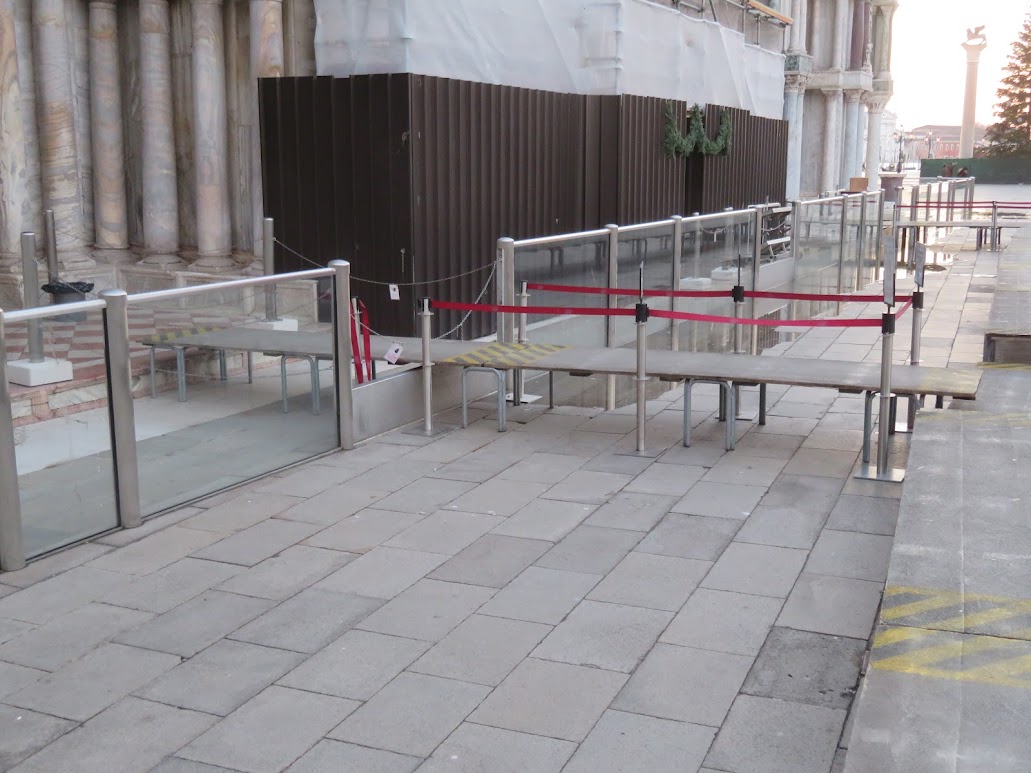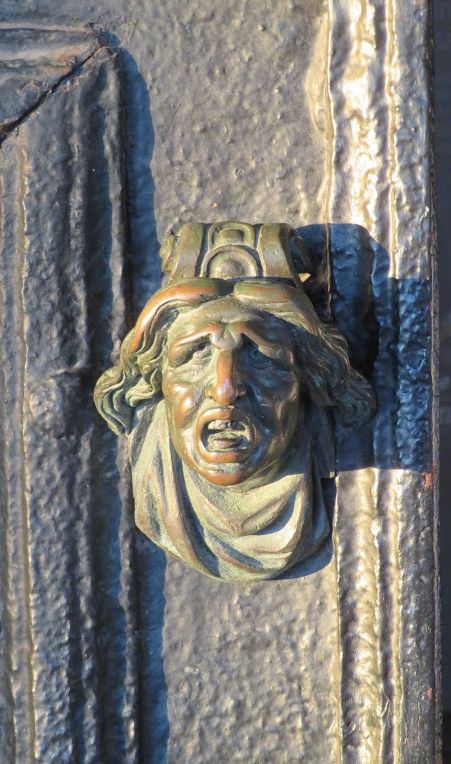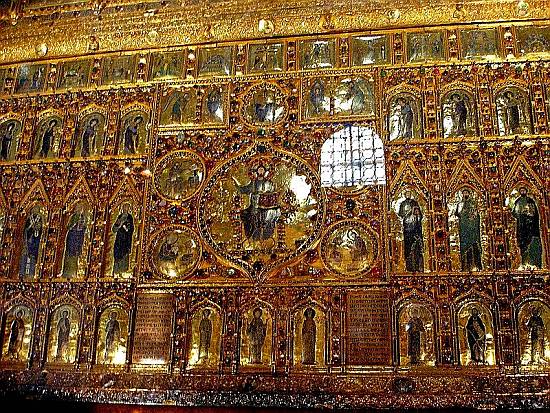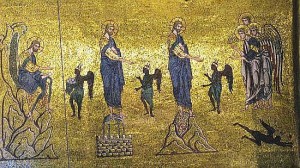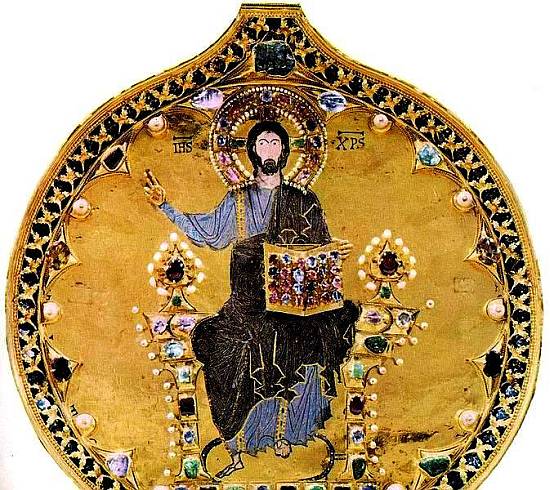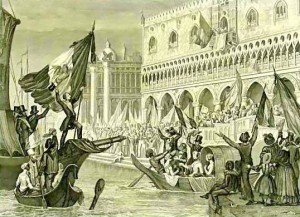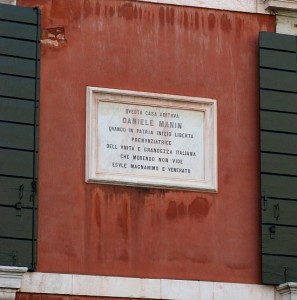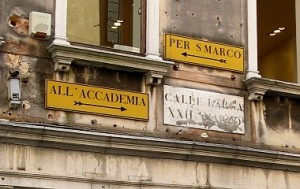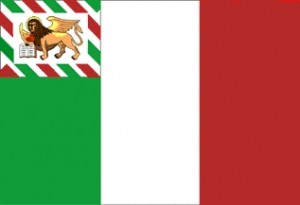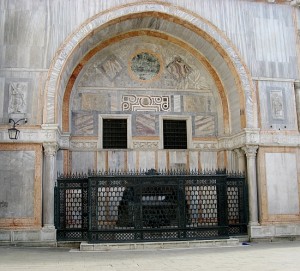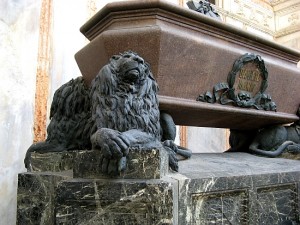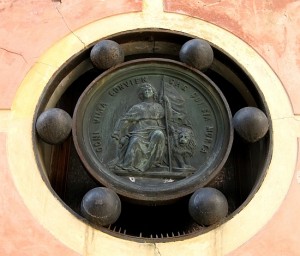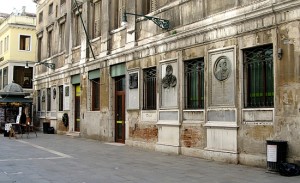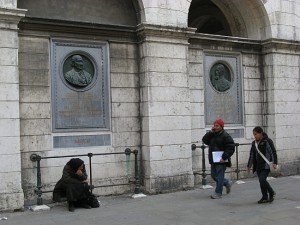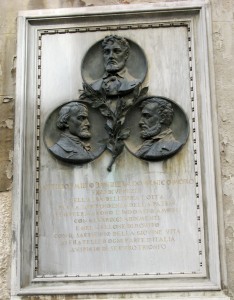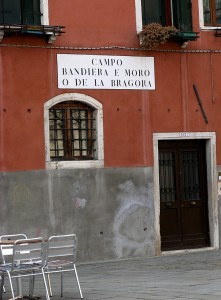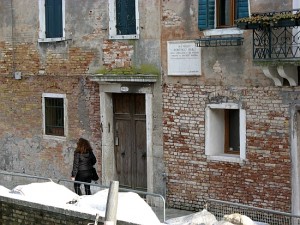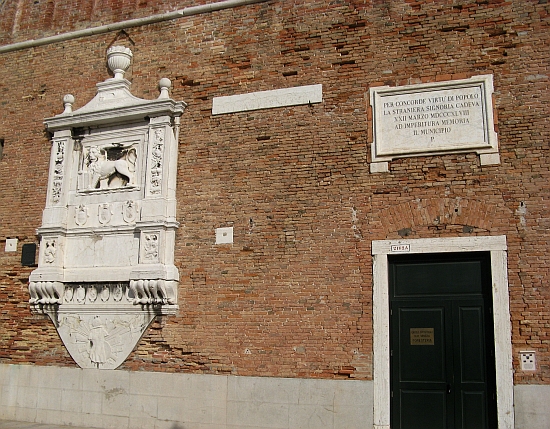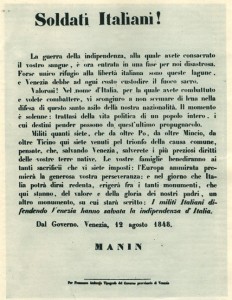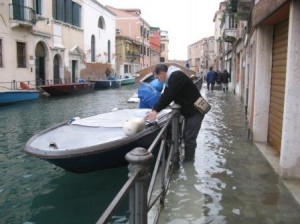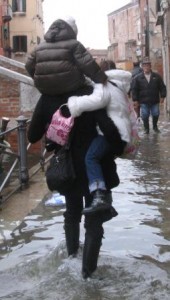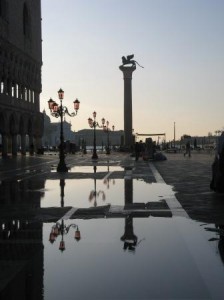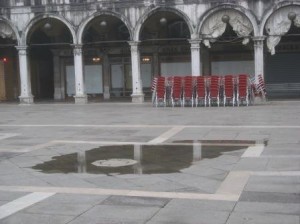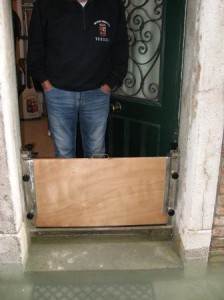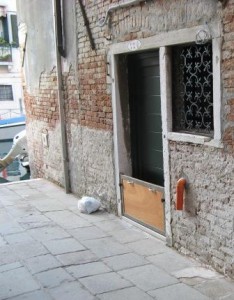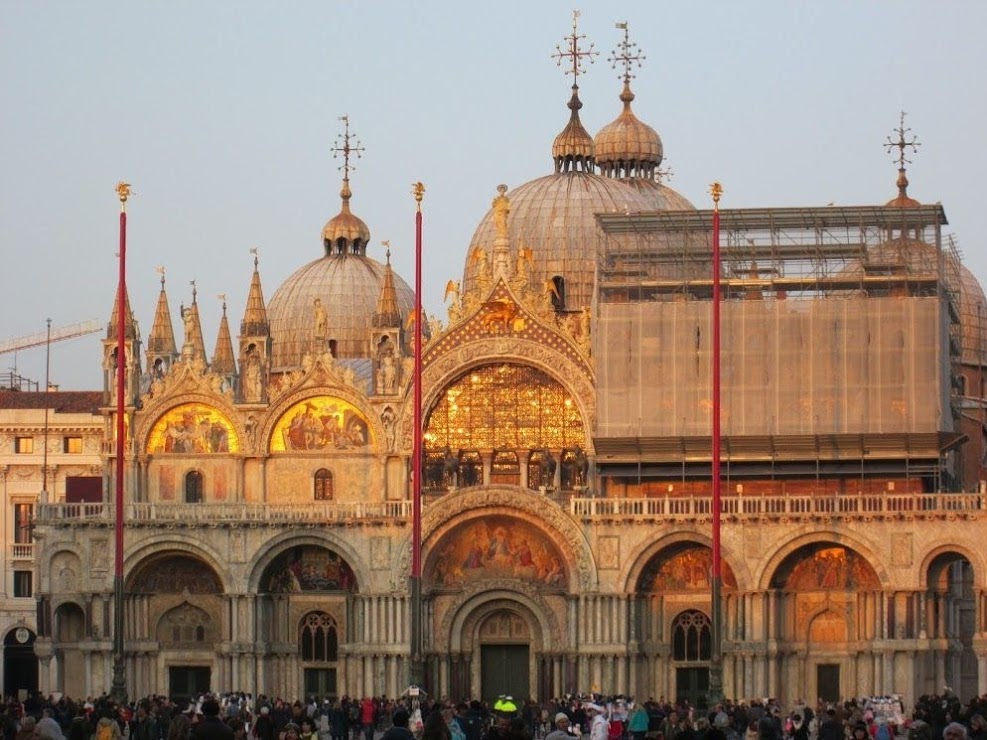
May it be far from me to herald the new year with a broken string or rusty trombone, but although I have almost completely lost interest in reporting on Venice’s daily misadventures, I can’t resist this one. I should, but I can’t, because what happened seems like it ought to raise at least a chuckle. Instead, I think it’s more deserving of a resounding raspberry.
You have heard of the Great Man theory of history? I propose the unfortunate incident of January 6 as an example of the theory, yet to be named, of the phenomenon by which is is almost guaranteed that the simplest task will also prove to be the most important, and the easiest to forget at the moment of crisis. Or put it this way: If something is going wrong, the office tasked with providing measures against wrong-going will be closed for the holiday weekend, call back on Monday.
Brief context: Vast work was completed in November 2022 to encircle the basilica of San Marco with a glass wall to defend it from acqua alta. Too many years, rounded off to the nearest century, of saltwater soaks have damaged the mosaics and marble columns of the narthex, damage I have seen with my own eyes.
Although the MOSE system had finally become functional by then, the lagoon barriers were intended to be raised (it was said) only when the tide was predicted to reach 140 cm above mean sea level. It costs hundreds of thousands of euros each time to raise the floodgates, and they are only useful for a few hours, so the deciders have to decide if the expected height of the water justifies the cost. That is a very tricky calculation to make, as you can imagine.
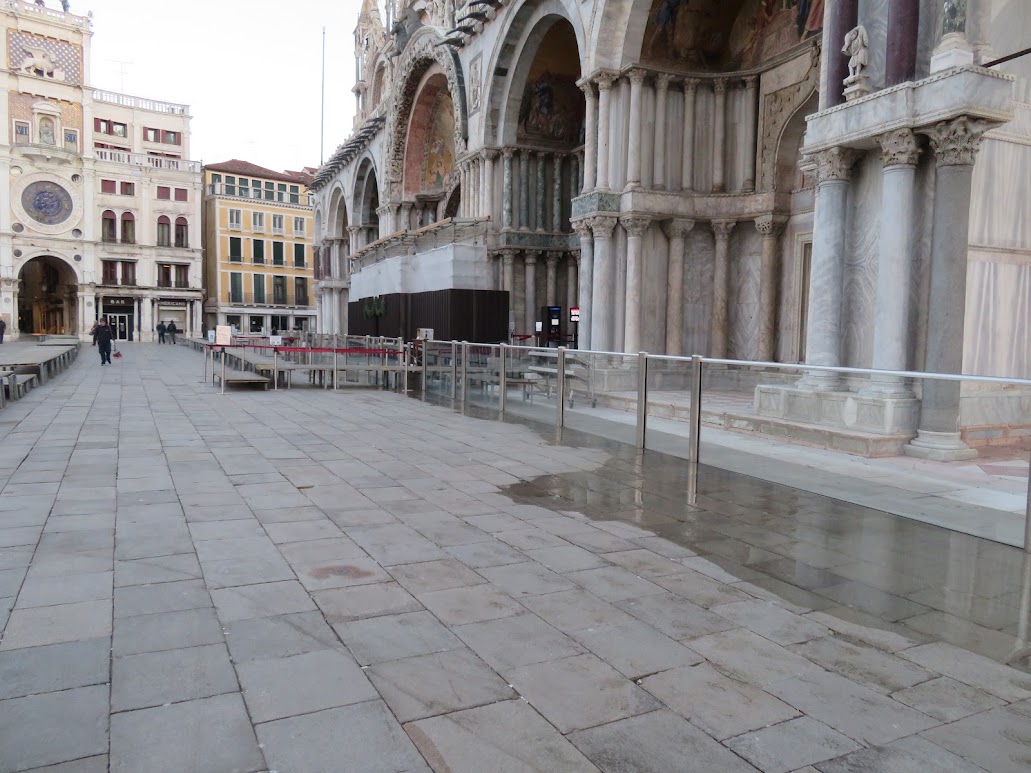
Of course, as soon as that level was stipulated as raising-gates time there came wails and shrieks from all sides, people objecting to the (to them) unreasonably high limit. So the city rapidly backtracked, and the likely level for floodgate-raising dropped by tens; it went down to 130, then 120, then 110, then even 100. It was like an auction in reverse where the bids are decreasing. In any case it appears that the cutoff height seems to be slightly negotiable.
The Piazza San Marco stands at 85 cm above mean sea level, so it is destined to be damp even with the most modest inundations. And the basilica couldn’t be expected to tolerate small water on the stone while waiting to be protected from big water. Therefore the highly excellent idea of protecting the basilica alone was mooted, and budgeted, and scheduled, and accomplished.
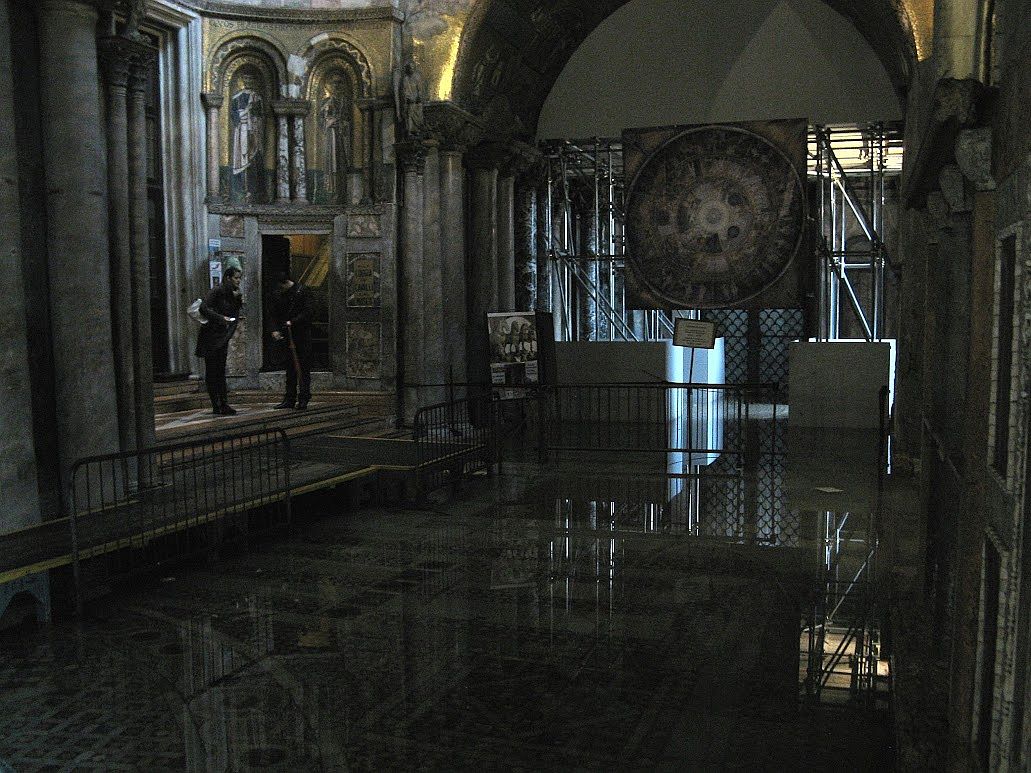

And yet, on the morning of January 6, water rose to a mere 97 cm in the Piazza; not enough to require MOSE to be activated, by any means, but enough to drench the narthex of the basilica just as it had in 1859 (made up. Could have put 1759. 1620. 1492.) The very thing that 5 million euros had been spent to prevent just up and happened all by itself.
Because there are openings in the glass barrier wall to permit people to enter the church. Those openings must be closed with the typical metal barrier, otherwise there’s no point in having the wall. Workers (usually from the two construction companies involved) have to put up the barriers. And somebody has to tell them to do it. But if you haven’t got the workers because they’re all off duty for the holiday weekend, does it matter who is responsible for ordering all hands on deck? Of course it does.
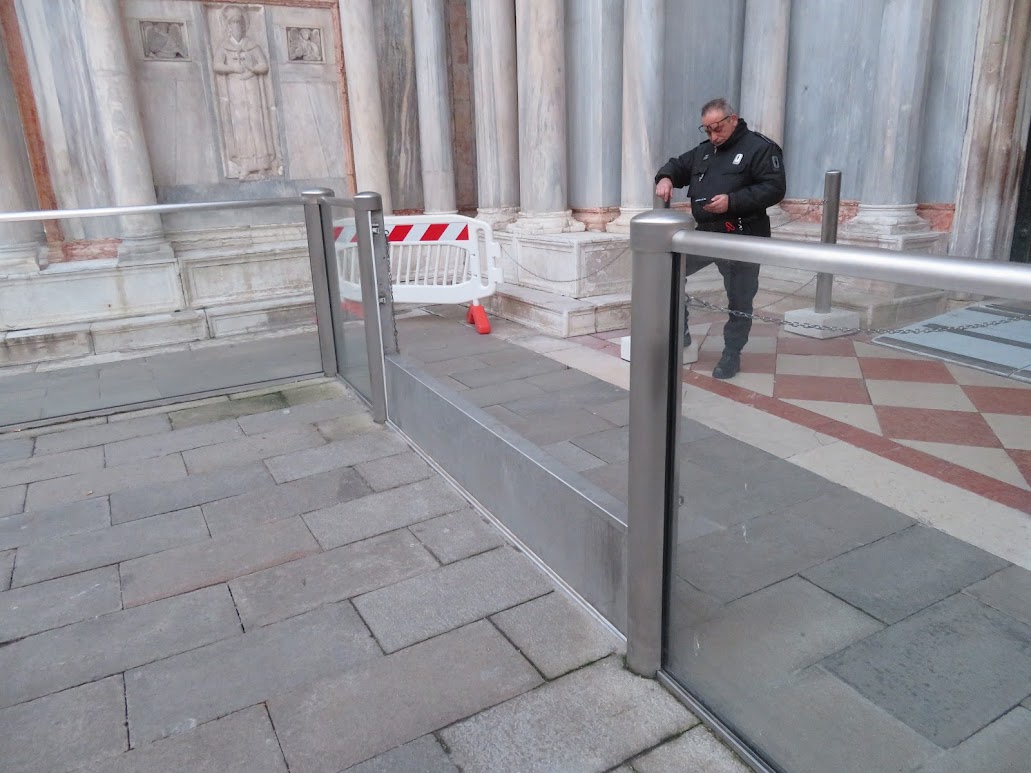
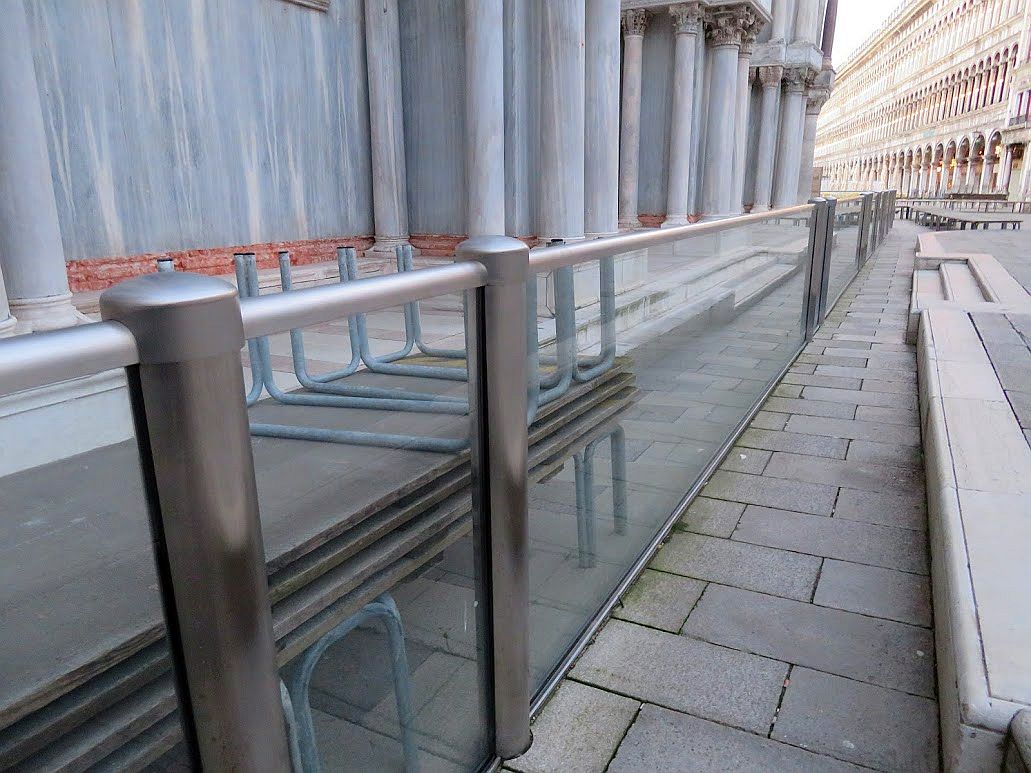
Not made up. The workers were absent. The person who provides for emergency interventions somehow did not check the tide forecast, even though everybody in Venice does it about ten times a day. Perhaps that person didn’t check because he/she/they were also away somewhere. In any case, for anybody to have usefully been on tide-watching duty they’d have had to be at the basilica before 6:00.
Please recall that January 6 was Epiphany, and a Saturday, so plenty of workers and employees of all sorts were probably still enjoying the Christmas holidays.
By the time that personnel at the basilica realized that nobody was coming to insert the barriers to block the tide, the church was taking on water like H.M.S. Indefatigable after striking the reef. The narthex was flooded.
Whoever left the barn door — I mean, basilica-gate — open must have spent a lively interlude in somebody’s office on Monday morning attempting to explain. Anyone listening at the door might well have heard one phrase shouted for 15 minutes: “You had ONE JOB.”
